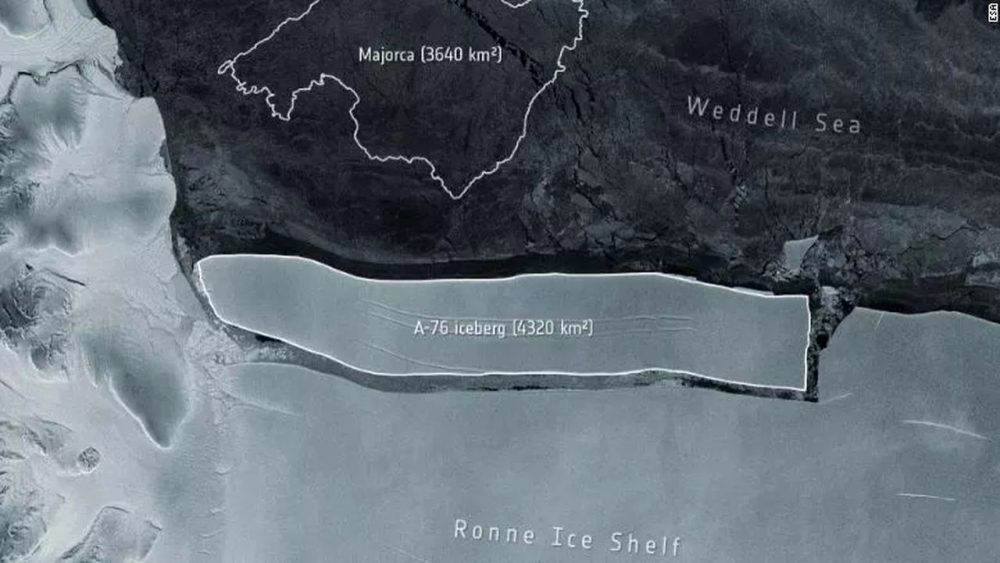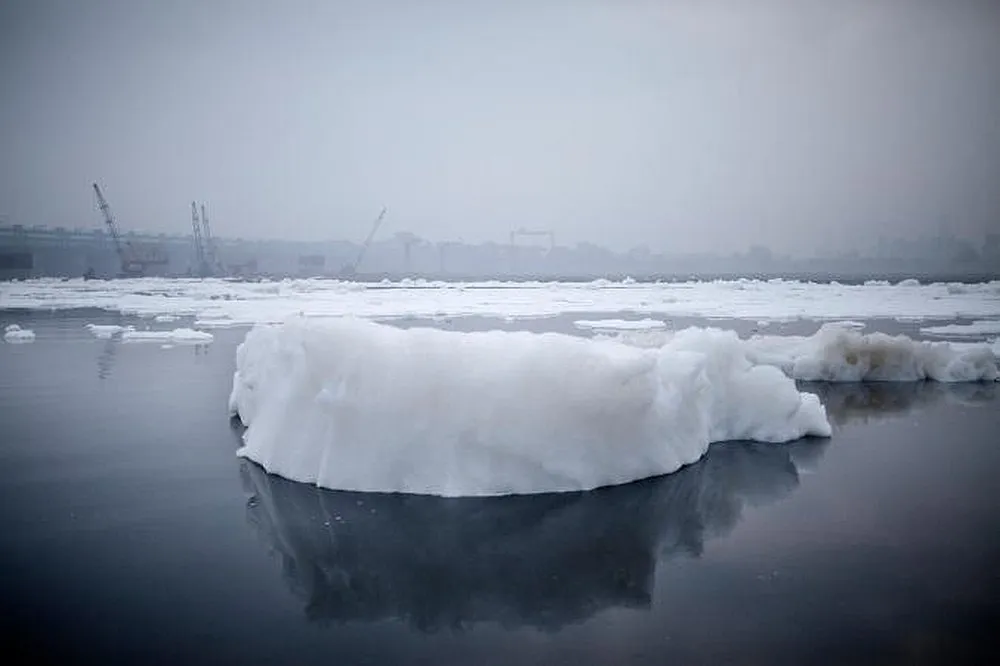World’s Largest Iceberg Calved out from Antarctica
An enormous iceberg has calved from the western side of the Ronne Ice Shelf, which now lies in the Weddell sea in Antarctica, as reported by the European Space Agency (ESA).
The iceberg looks like a giant iron board from the top and is estimated to be around 170 kilometers in length and 25 kilometers in width. This makes it slightly larger than the Spanish island of Majorca.
The massive ice mass calved out naturally, as huge chunks of ice shelves calve out regularly. Scientists aren’t attributing the break-off to climate change and insist that it is part of a natural cycle.

Image: ESA
The iceberg was spotted by Keith Makinson, a polar oceanographer, and was confirmed by the US National Ice Center using ESA’s Copernicus Sentinel-1 imagery.
Also Read: Infamous A68 Iceberg Melts Away in the Atlantic Ocean
The huge chunk of the iceberg is known as A-76, and the name is based on science. These icebergs are traditionally named after the Antarctic quadrant in which they were previously identified, then giving sequential numbers to each section.

Photo: Giulio Di Disturco
The Ronne Ice Shelf is near the Antarctica Peninsula – one of the largest among various floating sheets of ice that connects to landmass, extending to another area.
The new iceberg does not contribute to sea-level rise as it is a part of a floating ice shelf, unlike melting ice cubes in your drink. Glaciers, on the other hand, raise the global sea level after it breaks into the oceans.
However, ice shelves along the Antarctica peninsula, away from the South Pole have undergone rapid meltdown over the years. This phenomenon is related to global warming and serious action needs to be taken to curb it.
Via: CNN


